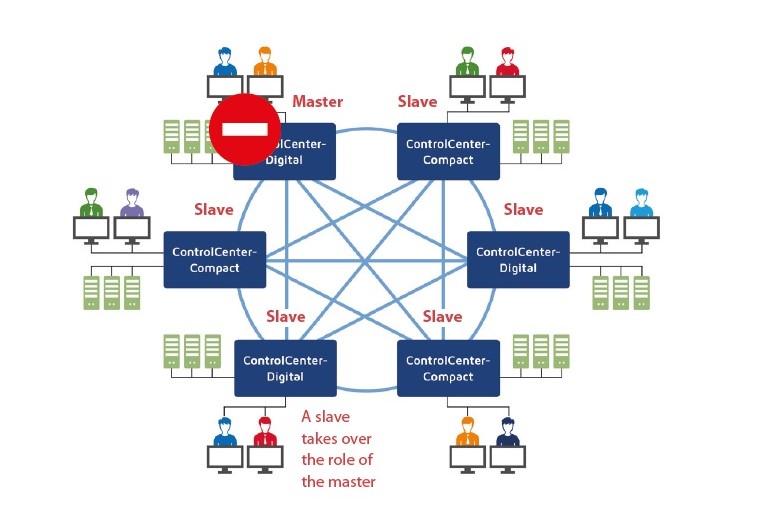A KVM Matrix-Grid™ helps you implement extremely large KVM installations. Communication between matrix switches is bi-directional. Especially for critical applications, a fully redundant topology provides additional benefits for the availability of all connected systems.
Users don’t even notice the complexity of the installation. To them, the matrix switches in the network feel like one big matrix, allowing them to do their job without having to think about the system infrastructure. They enjoy the many benefits of increased flexibility and reliability, and can access all the computers connected to the grid from their workstations.
When setting up a grid, however, there are a few things you should keep in mind to make your installation as secure as possible. All matrices in the grid operate in a distributed fashion. However, you must designate one matrix switch as the database leader for the entire matrix grid. The database leader manages the entire system and stores all records locally. The other matrix switches in the grid run in Follower database mode. Each receives an up-to-date replica of the entire leader database, providing basic failover protection. Even if the leader database fails, the database is still stored and available on the follower database. However, if the leader were to fail, the database would go into read-only mode, allowing only basic KVM operation. In this case, you would have read-only access to the local database replica and would not be able to modify any records.
To offer you even more security and flexibility for such a scenario, we have developed the MatrixGuard.
How does a MatrixGuard work?
If the database leader fails or is not available, another matrix switch takes over its tasks with the help of a MatrixGuard. A database follower becomes the new database leader. This change of roles takes place automatically according to previously defined rules. Matrix grid members connect to the new leader and the system restarts automatically. And you do not even have to do anything during this process. The entire operation of the remaining components is automatically ensured (except for end devices connected to the matrix that is no longer available).
You can also use the Restore Connections option to restore the switching states you were using when the leader failed.
But what happens if the original database leader restarts? Even this does not affect the current operation. If another member has taken over the role of database leader in the meantime, the original leader will automatically switch to “follower” mode. You won’t lose any changes you’ve made to the database in the meantime.
- HungaroControl – how KVM helps ATCOs to monitor an airport remotely - 20. October 2022
- Live at ATCA Global 2022: G&D to present the best of KVM and multiviewing - 11. October 2022
- How to seamlessly integrate KVM systems into high-end collaborative control rooms - 10. October 2022


